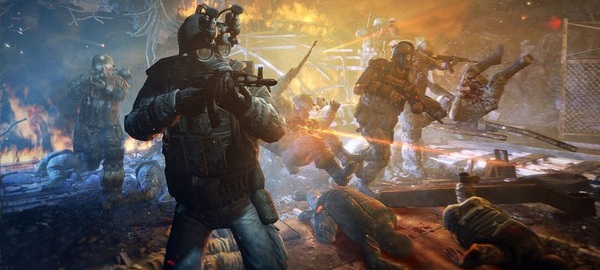THQ’s Community Manager, Joe Walz, revealed some new information about Metro: Last Light. According to Walz, Metro: Last Light will be present at this year’s E3 and THQ might share some screenshots and trailers before it. In addition, 4A Games has been hard at work to redesign the user interface, HUD, and controls. The company believes that these were some of Metro 2033’s flaws and an area they are putting a lot of focus on for its sequel.
As you may have guessed, the 4A Engine will be modified, updated and optimized even more in Metro: Last Light. Walz promised that they’ll be talking about the technology in a lot more detail later in the PR campaign and that their goal is to achieve the best visuals in each and every platform of Metro: Last Light.
4A Games is also focusing on explaining how the dual ammo economy works better to the player, and improving the interface (both HUD and trading interface) so the mechanic is more intuitive to use. And no, the bullet currency won’t be changed.
Last but not least, the destruction in Metro: Last Light won’t be structural, but designed to enhance strategic decision making when approaching certain situations. Wals presented the E3 Demo of last year as an example to the game’s destruction, meaning that players will be able to see walls and other surfaces crumbling from bullet fire to reveal the re-bar structure within. Destruction in Metro: Last Light is ‘consistent with this across all destructible materials considered part of the structure of the environment (i.e. walls, barriers, etc)‘. Naturally, there will be standalone items in the environment that can be fully destroyed and there will be also materials that bullets will pass through, and some flammable materials.
Metro: Last Light is currently slated for a 2013 release on current generation consoles and PC!

John is the founder and Editor in Chief at DSOGaming. He is a PC gaming fan and highly supports the modding and indie communities. Before creating DSOGaming, John worked on numerous gaming websites. While he is a die-hard PC gamer, his gaming roots can be found on consoles. John loved – and still does – the 16-bit consoles, and considers SNES to be one of the best consoles. Still, the PC platform won him over consoles. That was mainly due to 3DFX and its iconic dedicated 3D accelerator graphics card, Voodoo 2. John has also written a higher degree thesis on the “The Evolution of PC graphics cards.”
Contact: Email

